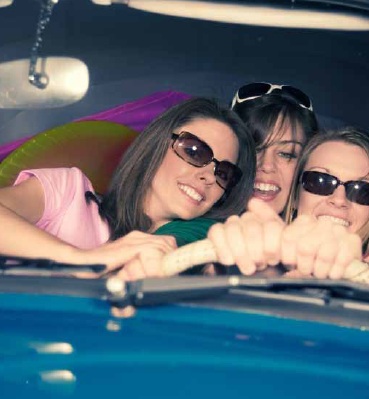Seatbelts and Child Passenger Safety
FYI... those are crash test dummies.
Unfortunately I have several adults close to me that just will not wear their seatbelt. They do not even like riding with me anymore as I will not put the car into gear until they BUCKLE UP and I refuse to ride with them because they will not BUCKLE UP. Their children are now becoming fine young adults, but even they struggle from time-to-time to BUCKLE UP, but give me no grief when I "remind them" of the need. Back in the early 1990's a female judge in Louisville, KY made national headlines when she sentenced some teens to 40 hours of volunteering with the LFD EMS units so they could see first hand what impaired driving does to people and their families. She was of course shot down quickly, with many claiming her punishment was too harsh. I only wish we had more judges like her! Having been in the fire service for many years I too saw first hand what happens when people make poor choices regarding their safety and the safety of their loved ones and hence I have been a hard ass for seat belts and impaired driving ever since. This video just makes my blood boil, but it needs to be seen by as many people as possible. Let me set up the scene for you... pay close attention to the two largest objects thrown from the vehicle! My accident investigation reconstruction skills may be a bit rusty but my physics has not left me! I can say WITHOUT any question, BOTH objects where LOOSE WITHIN THE VEHICLE! This was NOT in the USA (I think Russia) but unfortunately this occurs thousands of times each year and with MUCH more devastating outcomes. PLEASE BUCKLE UP and for everyone's sake BUCKLE UP your children - they are COUNTING ON YOU FOR THEIR FUTURE!
When you get into your car, truck or van, do you buckle up? If not, it may be because you’ve been led astray by common misinformation about seatbelts? Here are the answers to some of the questions that people most often ask about seat belts:
Make it a Habit If you make it a habit to do it every time, you won’t even think about it. And you can drive with the peace of mind that your chances of avoiding death or serious injury are far greater every time you get in a vehicle. "Watch your thoughts; they become words. Watch your words; they become actions. Watch your actions; they become habits. Watch your habits; they become character. Watch your character; it becomes your destiny." - Frank
The presence of passengers in a vehicle has been shown to increase the risk of fatal crash involvement for teenage drivers; however, the studies that have quantified this relationship were based on data that are now over a decade old. In the years since these studies, most U.S. states have enacted graduated driver licensing systems that limit the number of passengers that young drivers are allowed to carry during their first several months of independent driving, and the number of 16- and 17-year-old drivers involved in fatal crashes each year has decreased by more than half. The objective of this study was to provide updated estimates of the relationship between the number and ages of passengers present and the crash risk per mile driven of 16- and 17-year-old drivers.
If you wear a seat belt every time you get into a vehicle, you’re more likely to: |
Partner Organizations I am proud to announce that The Chlorine Institute and SAFTENG have extended our"Partners in Safety" agreement for another year (2024) CI Members, send me an e-mail to request your FREE SAFTENG membership
Member Associations
|















